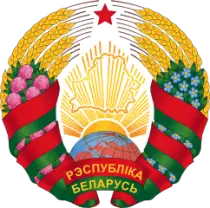Belarus, although often underestimated as a travel destination, has many interesting attractions — natural, cultural, and historical alike.
Belarus offers nostalgia tourism for those fascinated by the Soviet Union: Minsk and other cities still preserve many relics of that era.
In recent years, more agritourism options have appeared, especially around national parks. Many places can be reached by car or bicycle, as the road network is fairly well developed.
Odkryj najlepsze loty do blisko sto miast na różnych kontynentach. Sprawdź aktualne ceny i promocje.
Sprawdź loty do blisko sto miast na różnych kontynentachASF – African Swine Fever
ASF is a significant factor that has for years restricted the import of food products, especially pork and pork-based goods, also affecting tourists traveling to or from Belarus.
African Swine Fever (ASF) is a deadly viral disease of domestic pigs and wild boars. It poses no risk to humans but is extremely dangerous for pig farming. Belarus, like several other Eastern European countries, has been struggling with ASF for more than a decade.
In the EU, very strict regulations apply to the import of food from third countries (outside the Union):
You are not allowed to bring from Belarus into the EU (even for personal use):
- meat and meat products (e.g., sausages, lard, pork fat, canned meat)
- dairy products (milk, cheese)
- sandwiches containing meat (!)
- traditional homemade goods (e.g., jars of meat, pâtés, kindziuk)
Instead of sausages or homemade pork fat, you might consider:
- grain-based alcoholic beverages (e.g., samogon or Belarusian moonshine – but only legally produced!)
- local sweets – candy bars, curd-filled cakes
- herbal teas, e.g., herbs from Polesia
- artisanal culinary souvenirs without meat – such as homemade fruit preserves or dried mushrooms
Do Belarusians speak Belarusian?
Belarusians are able to speak Belarusian, but most of them do not use it in everyday life. It’s a bit like Kashubian in Poland, only on a much larger scale.
Belarusian is one of the two official languages of Belarus (alongside Russian). It is taught in schools, appears in state media, and is used in some institutions.
In practice, however, most Belarusians use Russian in daily communication. Belarusian is more often spoken:
- by people who consciously emphasize their national identity,
- in intellectual and opposition circles,
- in rural areas (often in a form close to so-called trasianka, a mixed Belarusian–Russian speech).



